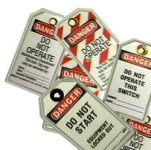Air Monitoring Rules for Criteria Pollutants Amended
As part of their Clean Air Act (CAA) responsibilities to implement the National Ambient Air Quality Standards (NAAQS), state and local air agencies must monitor for the presence of NAAQS pollutants (formally, criteria air pollutants) in the ambient air and report the monitored data to the EPA. The relevant regulations at 40 CFR Part 58 […]










